Start your tour in the Rosenkrantz tower by entering the door to the left in the reception and go down the stairs to the basement. When you have passed the basement, go up the stairs to the narrow corridor. To your right, in the end of the corridor, you will find the dungeon from the 16th century.
Further up the staircase in the tower, you follow the narrow, steep medieval staircase to the top. On your way up you can visit the different rooms. From the Gun Battery you can go up the wooden stairs up to the loft. Here you will also find an exit out onto the roof.
When you go down again, just follow the spiral staircase back down to the reception. On your way down you can see Sir Erik’s Chamber and Lady Helvig’s Chamber. You will end up at the reception and have hopefully had a nice trip through narrow corridors and steep staircases, and visited all the various rooms the tower has to offer.
We have three exhibitions for you to see:
There is also some armor, equipment and costumes on display
Attention! Please mind your head along the way, ceiling and doorways are very low. Please mind the uneaven stairs. Please watch the children along the way, it’s easy to get lost in the tower. Please be careful out on the roof, it´s a long way down.
This room was built by Jørgen Hanssøn in the 1520s. He walled up Håkon Håkonsson’s main entrance to the old royal courtyard via the castle gate just outside the tower. Jørgen first commissioned a new main entrance where you can see the remains of a tall, arched portal on the right side in the innermost part of the room. He also made the arrow slit you can see in the walled up window opposite the entrance. This wall was the outer wall of Magnus the Lawmender’s keep by the sea from 1270. He soon found that it was not good enough for defence purposes, and therefore built the room you are now standing in as an open forecourt, with a new entrance portal (today’s entrance) with a drawbridge. He kept the first portal as well, so that people had to pass through two portals, both with drawbridges, to enter the royal court. You can still see the holes of the drawbridge chains.
In Erik Rosenkrantz’s time, the room was known as a ‘tiled living room’.
The vaulted roof dates from the 18th century, when the tower was used as a gunpowder magazine.
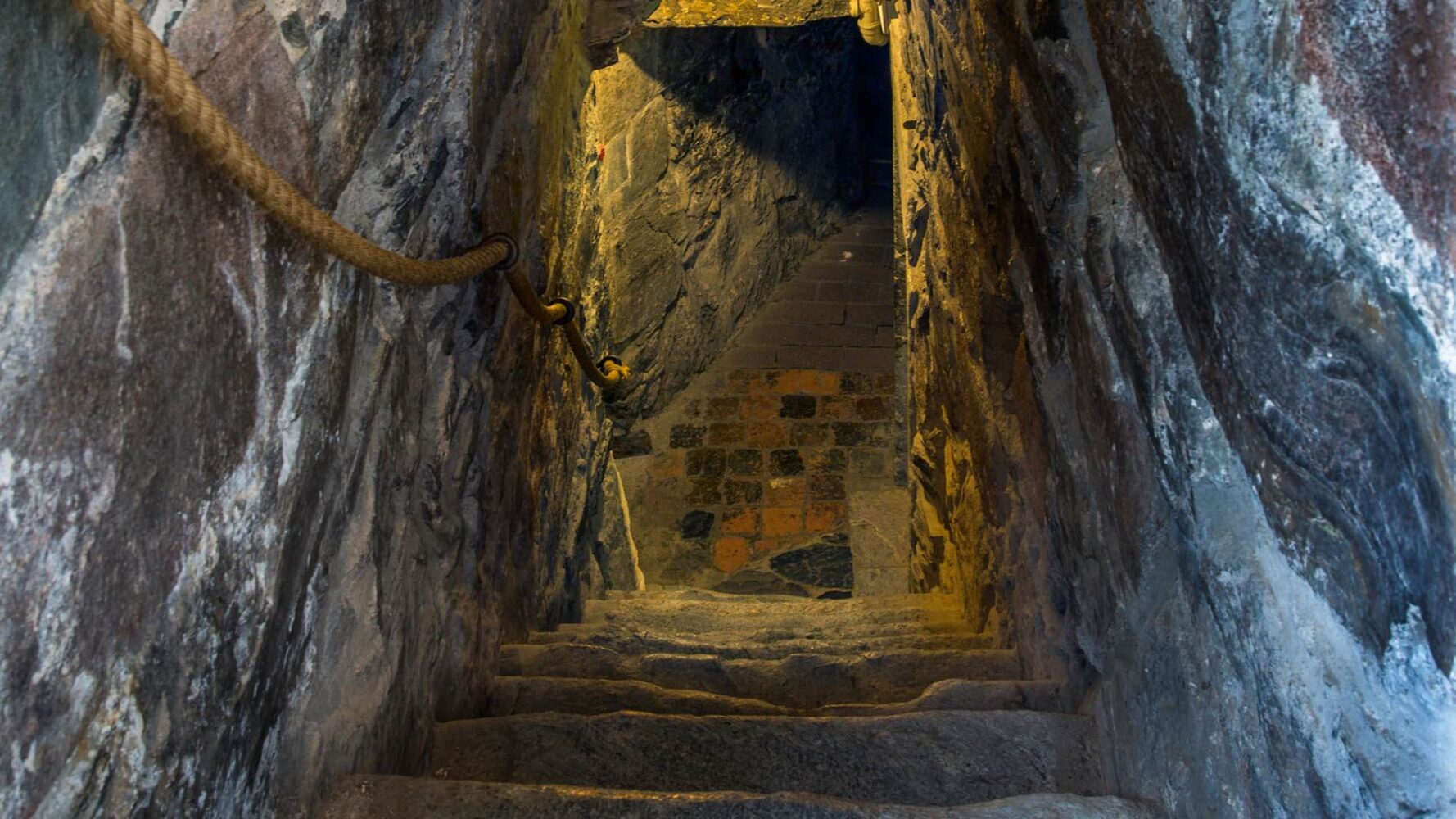
You are now standing in the cellar of Magnus the Lawmender’s keep. The room shows the original size of the keep that was built in around 1270. 1270. The cellars were probably used as storage rooms. You can see the bedrock sticking up as part of the floor.
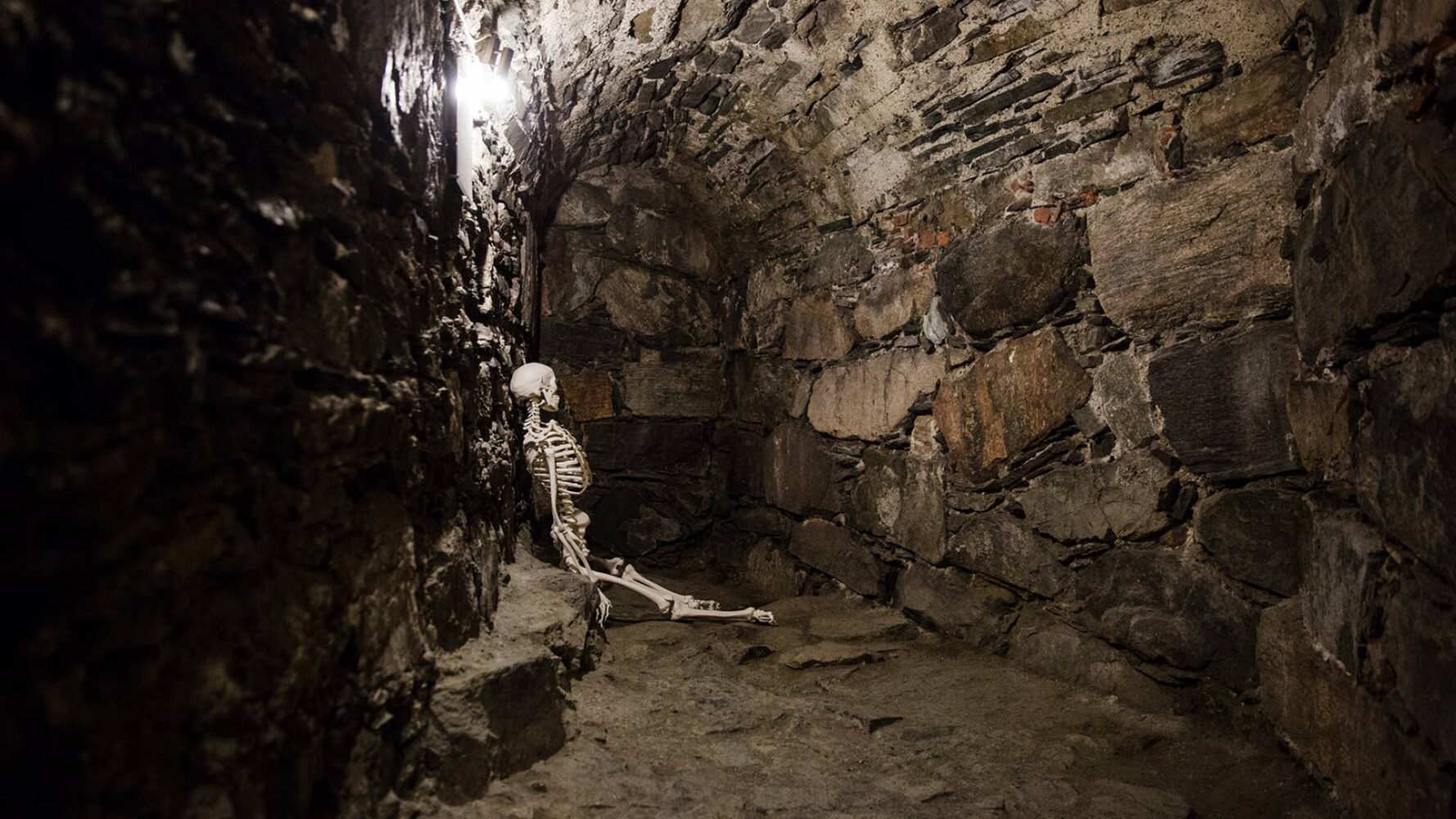
The Dungeon was built sometime in the 16th century and was used until the end of the 19th century. The prisoners’ only source of light and air was the small opening you see in the middle of one of the long walls. We know little about who was imprisoned here, but we do know that in 1563 five prisoners were imprisoned here for 13 months.
This is where the king’s guards lived. They could go out the door to the right and come out onto the guard positions on the ring wall around the entire royal court. You can also see clear traces of both Jørgen Hanssøn’s alterations in the 1520s and Erik Rosenkrantz’s alterations in the 1560s. The beam and beam holes you can see in the middle of the walls are from Jørgen’s time, when the floor level was here. The low door you see in the middle of the wall on the left is from Erik’s time, who remodelled the floor level. The door leads out to a small corridor that provides access to the spiral staircase.
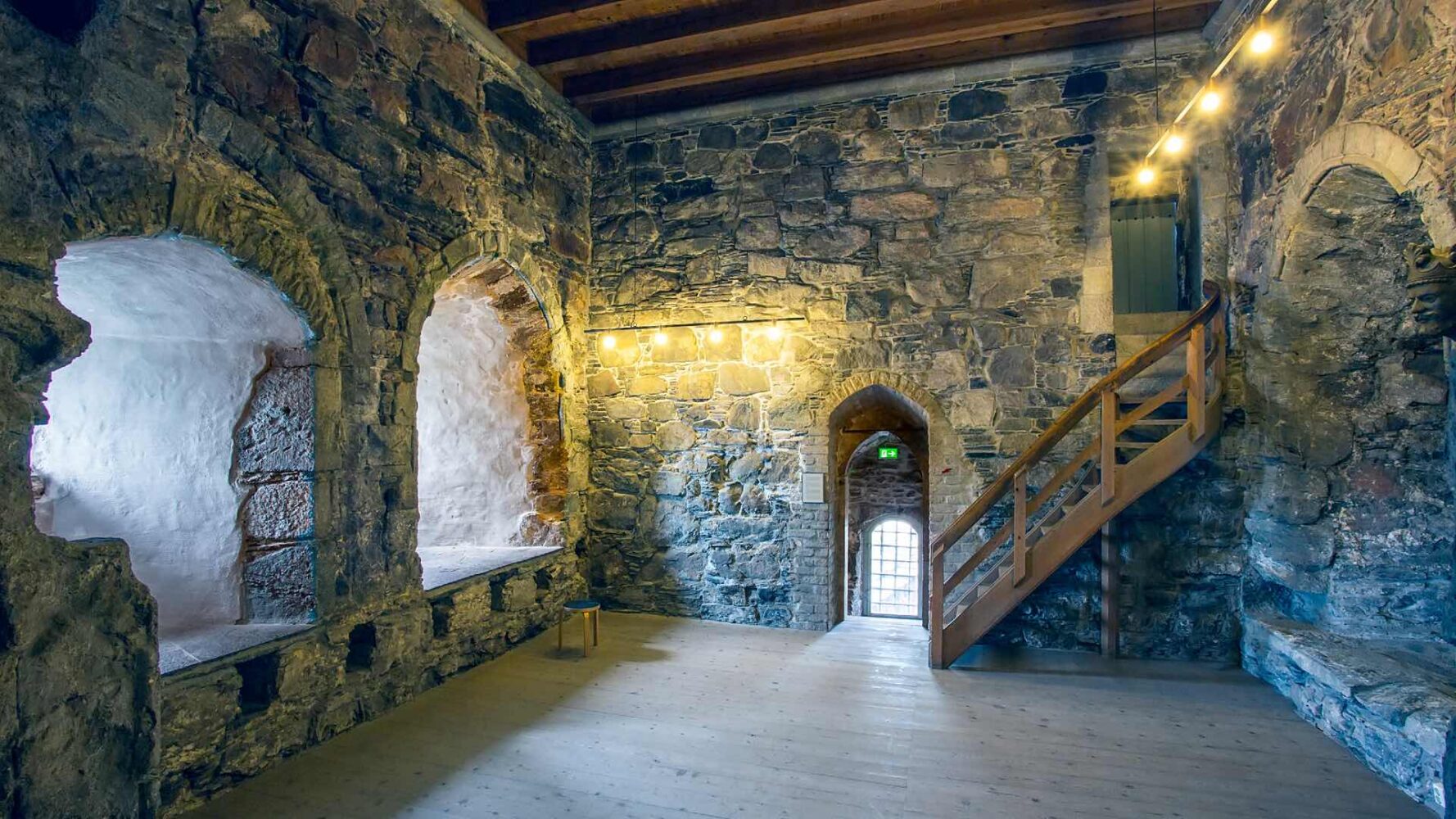
It is written in the saga that Magnus the Lawmender furnished his chapel in the winter of 1273. He was a pious king who created a beautiful chapel with an altar window, four large windows and a vaulted ceiling.
Today, you can see the remains of the altar and the window, as well as a holy water piscina on the right. You can also see Jørgen’s and Erik’s work here, the door at the very top of the wall is from Jørgen’s time, and you can see traces of beam holes at door height, showing the floor level in Jørgen’s time.
The large beam holes you see under the four windows are from Erik’s time, as is the stove in the corner. The floor was at this level during Erik’s time. Erik also had a simple door installed into the altar window, which provided access to a corridor leading to the spiral staircase.
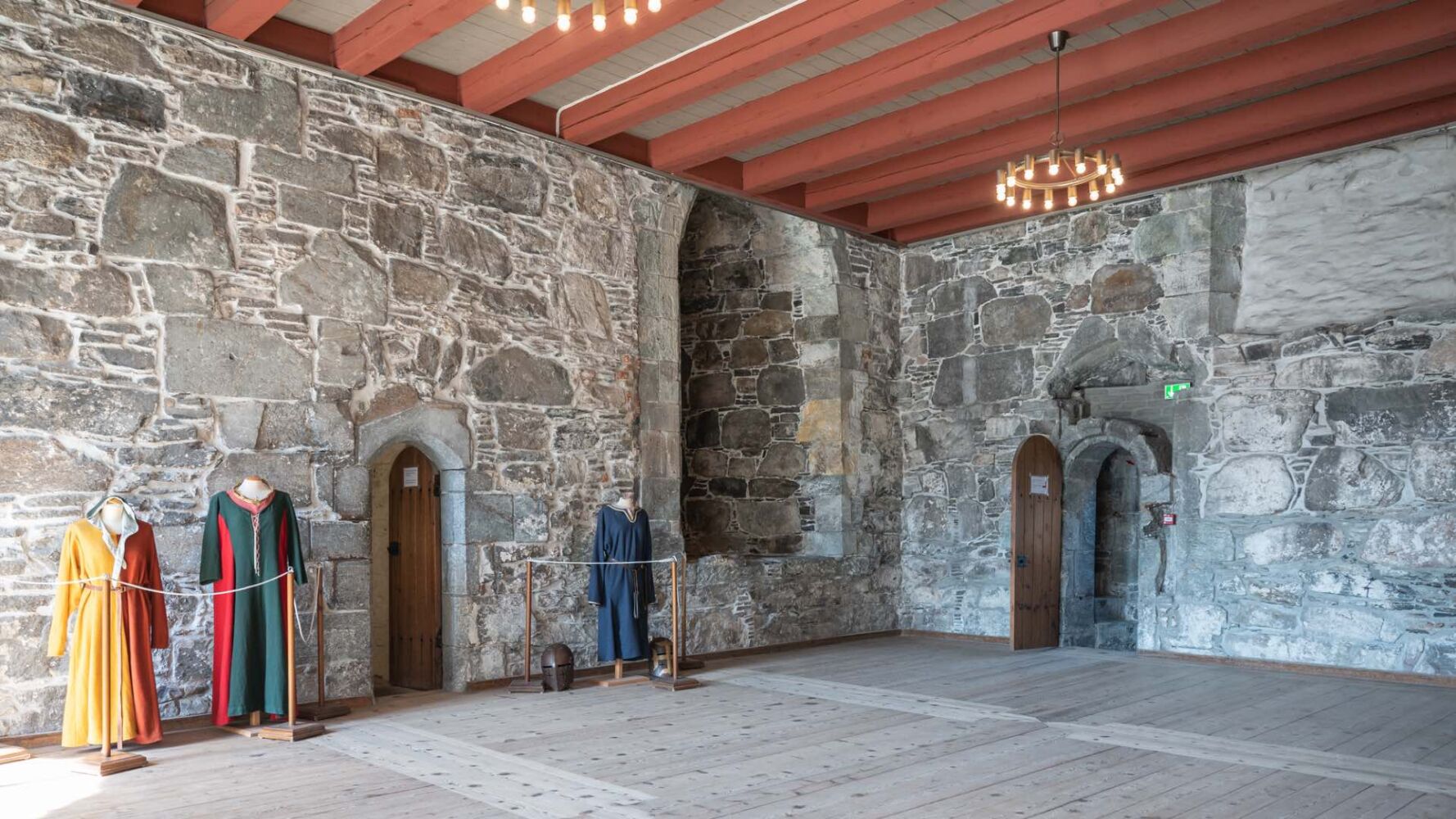
The room you are standing in now was Magnus the Lawmender’s bedroom. It had a very high ceiling, and if you look up you can see the old windows disappearing into the ceiling. This room is bigger than the rooms you have been in so far. The outermost part towards the city is from Erik’s time. He tore down the outer wall of Magnus’s keep and extended it. You can see traces of the original wall. This is the only room that has had the same floor level during all the building periods. Erik halved the height of the room. This was probably the most distinguished room, with an extension out through the door in the middle of the wall to an oriel over Vågen harbour. It also features a toilet. Among other things, the room was used as the King’s hall during King Christian IV’s visit in the 17th century.
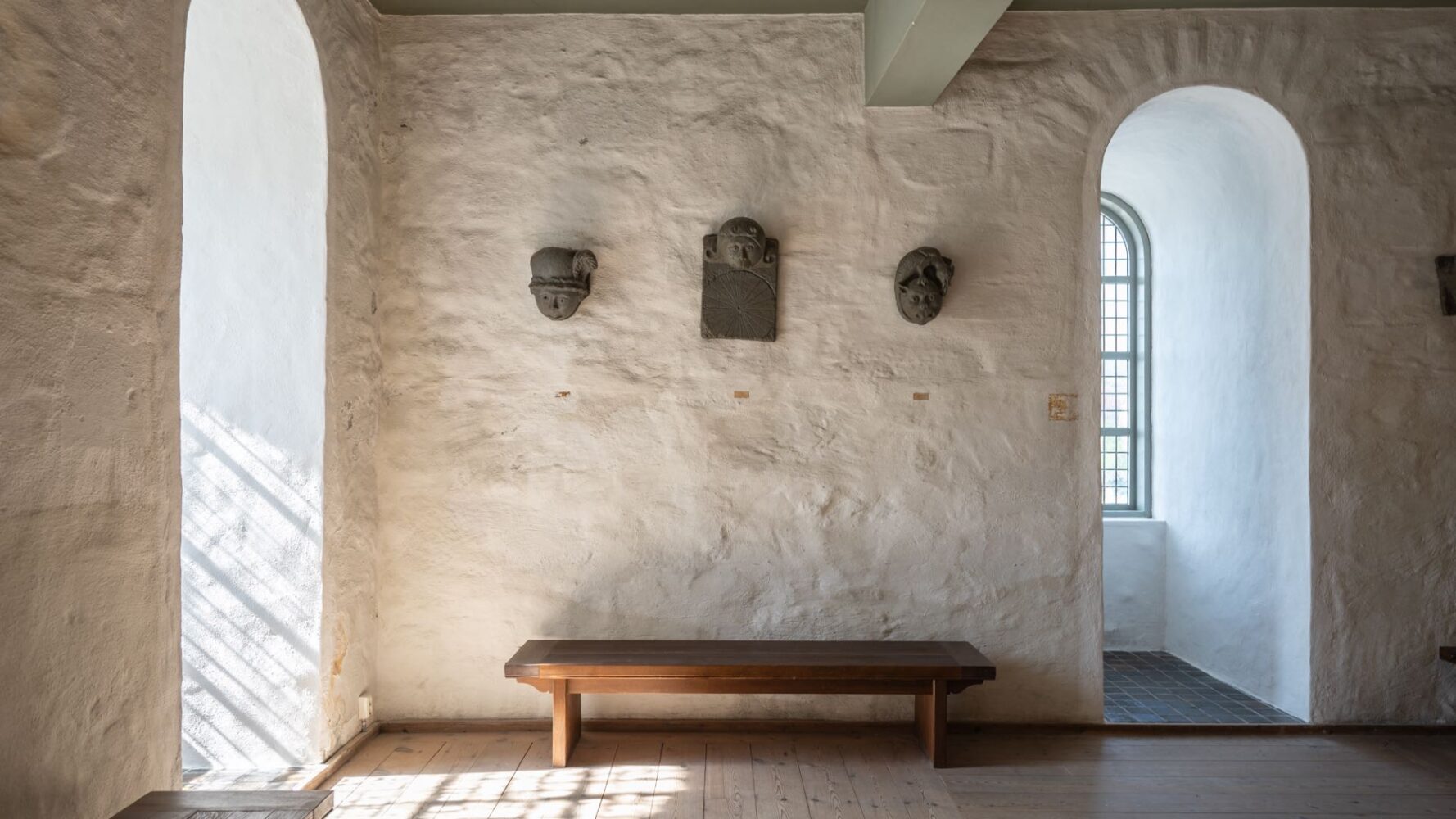
Erik Rosenkrantz made space for another room by dividing Magnus’s chamber in two. The room was used as one of the tower’s entertainment rooms, with a great fireplace on one wall. You can also see traces of the windows from Magnus’s chamber coming up from the floor.
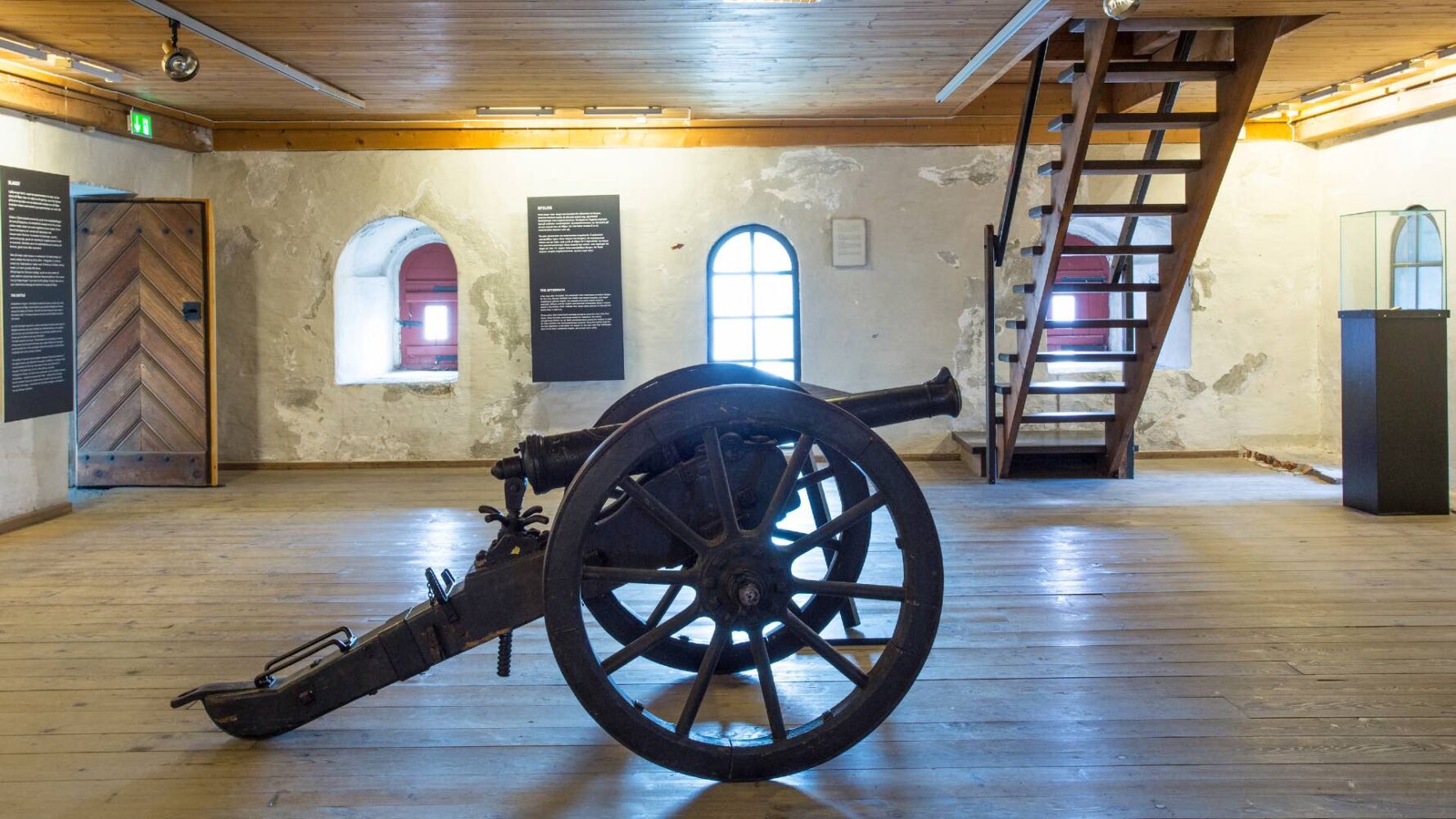
This room was added during Erik’s time, divided into two rooms with a small corridor between them. There was a clear line of fire on all sides. The only time we know that the tower and cannons were used was during the Battle of Vågen in 1665. You can read more about the battle and study old cannons here.
You can go up the wooden stairs up to the loft and out onto the roof:
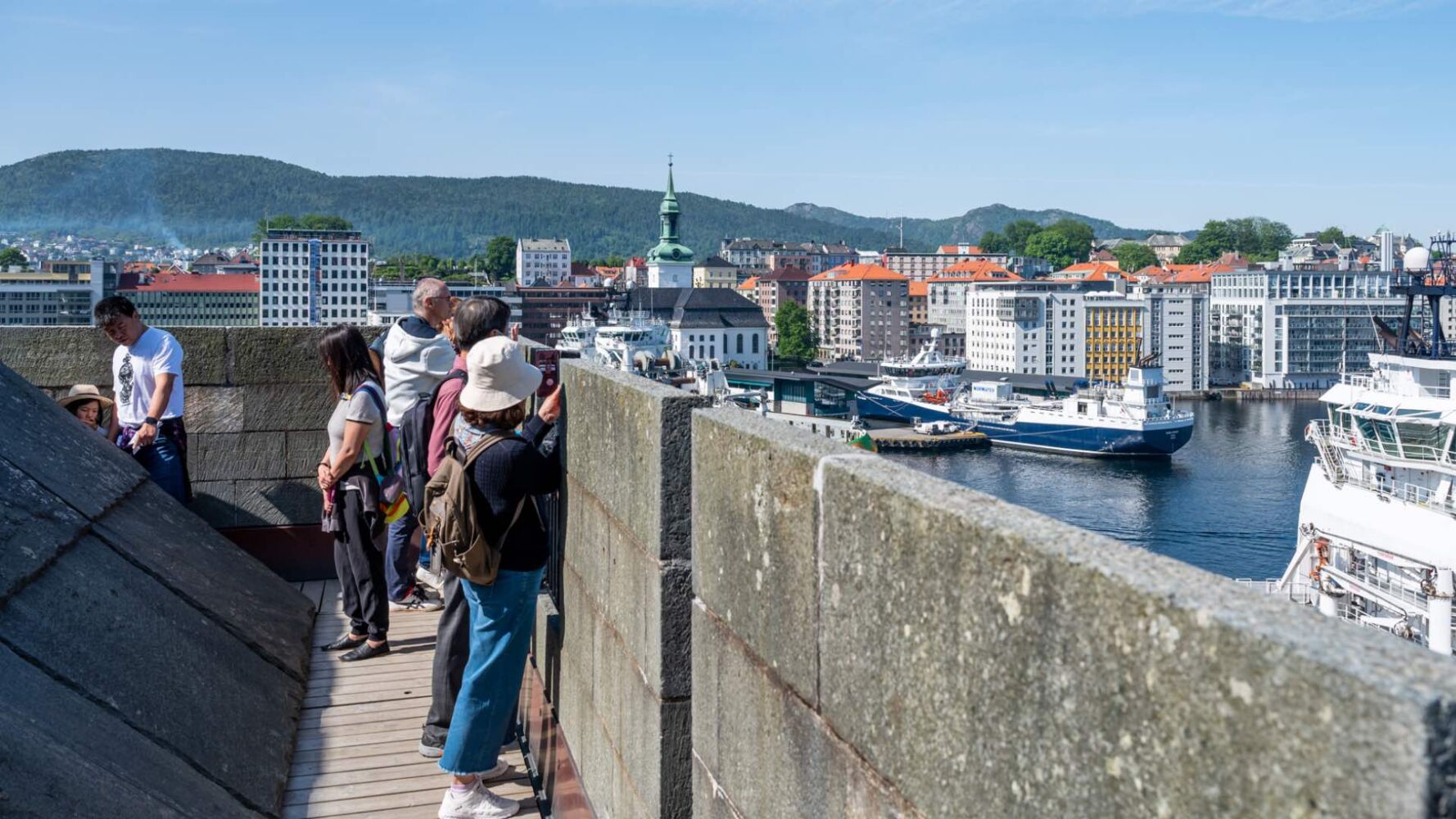
In the Loft there is an exhibition of the Church centre in Holmen (later Bergenhus Fortress).
The hatches in the floor hide sloping channels that terminate in square apertures on the west wall of Lady Helvig’s Chamber on the floor below. They served as openings to throw stones, boiling water or pitch onto the enemy below. They date from the Middle Ages, when this wall was the outer wall of Magnus the Lawmender’s tower, and this type of defence («meurtrieres») was a normal part of a fortification.
This is one of the Renaissance rooms Erik commissioned in the new part of the tower. It has beautiful windows and a lovely fireplace, and was probably used for entertaining. Here you can also read about the trial against Anne Pedersdatter, a friend of Lady Helvig, who was accused of witchcraft .
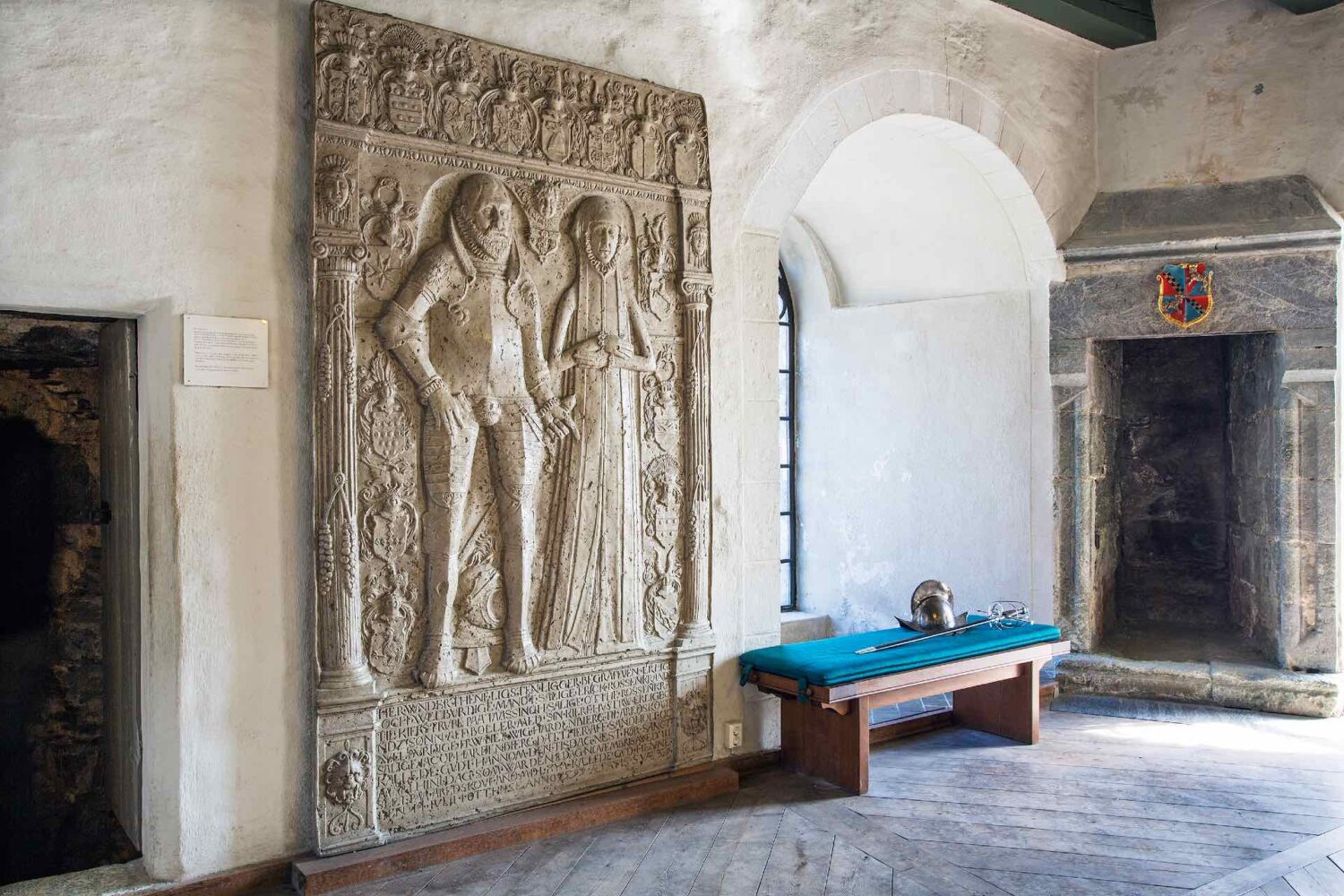
On the floor below Lady Hedvigs chamber you will find Sir Eriks chamber. This room also features beautiful windows, one of which has a lead frame dating from the 19th century. A large, attractive fireplace is set in one corner, with Erik Rosenkrantz’s coat of arms above it. A copy of the couple’s gravestone hangs on the wall, the original is in Arreskov Church in Fyn in Denmark.
This is the last room in Erik’s tower. He built a new guard room here. Traces of the beams in the wall show where Jørgen’s preliminary work went.